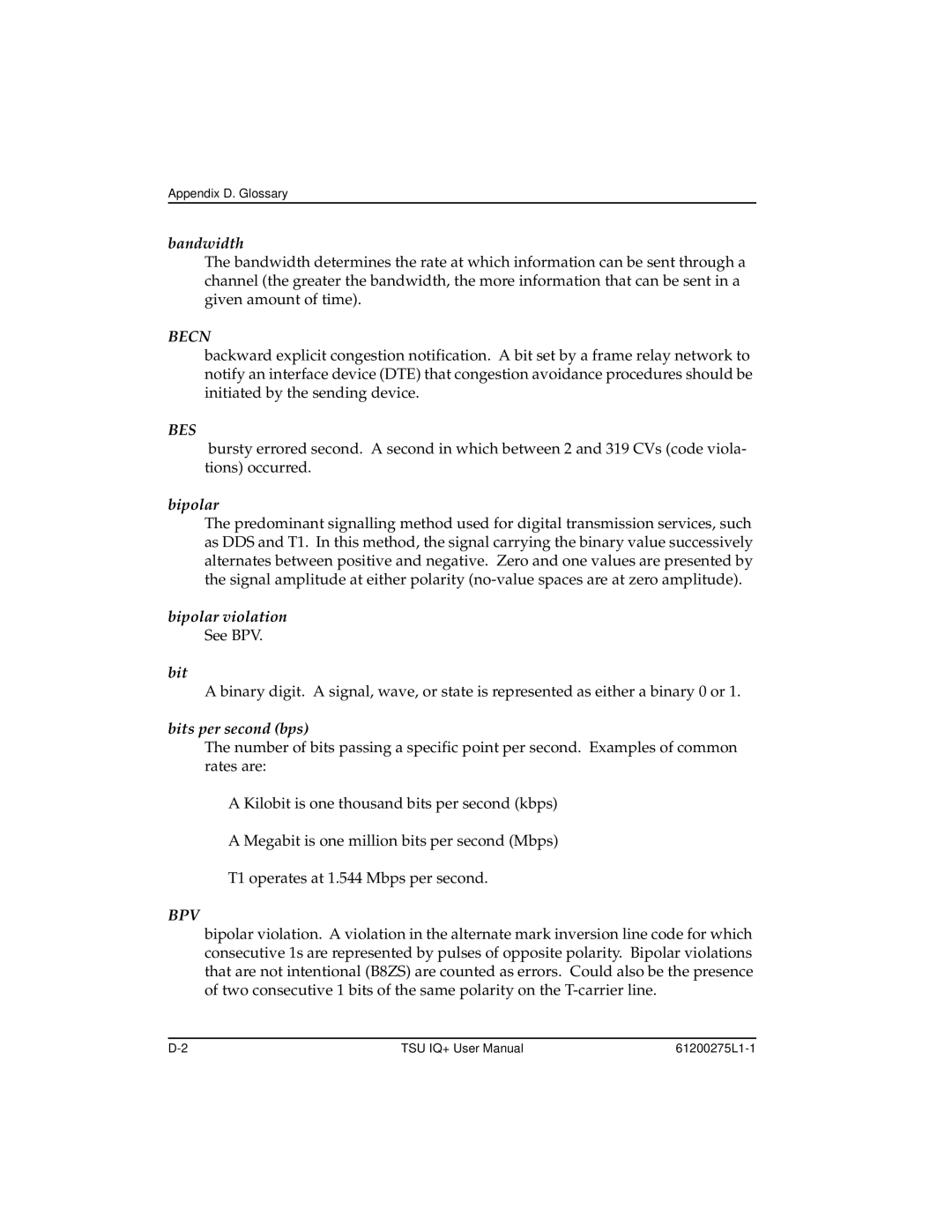
Appendix D. Glossary
bandwidth
The bandwidth determines the rate at which information can be sent through a channel (the greater the bandwidth, the more information that can be sent in a given amount of time).
BECN
backward explicit congestion notification. A bit set by a frame relay network to notify an interface device (DTE) that congestion avoidance procedures should be initiated by the sending device.
BES
bursty errored second. A second in which between 2 and 319 CVs (code viola- tions) occurred.
bipolar
The predominant signalling method used for digital transmission services, such as DDS and T1. In this method, the signal carrying the binary value successively alternates between positive and negative. Zero and one values are presented by the signal amplitude at either polarity
bipolar violation See BPV.
bit
A binary digit. A signal, wave, or state is represented as either a binary 0 or 1.
bits per second (bps)
The number of bits passing a specific point per second. Examples of common rates are:
A Kilobit is one thousand bits per second (kbps)
A Megabit is one million bits per second (Mbps)
T1 operates at 1.544 Mbps per second.
BPV
bipolar violation. A violation in the alternate mark inversion line code for which consecutive 1s are represented by pulses of opposite polarity. Bipolar violations that are not intentional (B8ZS) are counted as errors. Could also be the presence of two consecutive 1 bits of the same polarity on the
TSU IQ+ User Manual |
|
